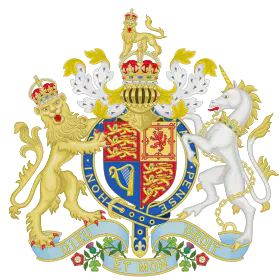- /
- Celtic calendar /
- 8th /
- August 14 /
- August 14, 1778

Gardiner’s Catholic Relief Act, formally known as the Roman Catholic Relief Act of 1778, was enacted in Britain to alleviate some of the restrictions placed on Roman Catholics by the Penal Laws. These laws had been implemented over the course of the 16th and 17th centuries to suppress Catholicism in Britain and Ireland and enforce the supremacy of the Anglican Church.
Background
Penal Laws: The Penal Laws were a series of oppressive statutes that severely restricted the rights of Catholics in Britain and Ireland. These laws barred Catholics from owning property, holding public office, voting, educating their children in the Catholic faith, and practicing their religion freely, among other restrictions.
Growing Sympathy and Reform Efforts: By the late 18th century, there was a growing sense that the Penal Laws were unjust, especially as the Catholic population was large and influential, particularly in Ireland. Additionally, Britain was facing external pressures, including the threat of rebellion in the American colonies and the need for more soldiers. Reformers began to argue that easing the restrictions on Catholics could help garner their loyalty and support for the British crown.
The 1778 Act
Charles Gardiner: The Act was largely promoted by Charles Gardiner, a Member of Parliament (MP) for Dublin and a supporter of Catholic emancipation. Although a Protestant himself, Gardiner recognized the injustices faced by Catholics and worked towards alleviating their conditions.
Provisions of the Act: The Roman Catholic Relief Act of 1778 was the first significant legislative step toward Catholic emancipation. The Act allowed Catholics to own property, inherit land, and join the military, provided they swore an oath of allegiance to the Crown, which denied the Pope’s temporal authority in Britain. This oath was a crucial element, as it aimed to assure the government of Catholic loyalty while relaxing some of the oppressive laws.
Impact of the Act: The Act was an important first step toward the gradual dismantling of the Penal Laws. It signaled a shift in attitudes toward Catholics, especially in England and Ireland, and laid the groundwork for further reforms. However, it was limited in scope and did not fully restore the rights of Catholics, leaving many restrictions still in place.
Reactions and Aftermath
Positive Reception among Catholics: Many Catholics welcomed the Act as a sign of progress, although it fell short of their expectations for full equality. It gave Catholics the opportunity to reclaim property and pursue professions that had previously been closed to them.
Protestant Backlash: The Act also sparked considerable opposition from Protestant groups, particularly in Scotland, where the Protestant Association, led by Lord George Gordon, feared that the Act would undermine Protestantism. This opposition culminated in the Gordon Riots of 1780, where anti-Catholic mobs protested against the Act, leading to widespread violence and destruction in London.
Further Reforms: Despite the backlash, the Act paved the way for further Catholic relief measures, including the Roman Catholic Relief Acts of 1791 and 1829, the latter of which is known as the Catholic Emancipation Act. These later acts removed most of the remaining restrictions on Catholics and allowed them to sit in Parliament and hold public office.
Legacy
Gardiner’s Catholic Relief Act of 1778 is seen as a pivotal moment in the long struggle for Catholic emancipation in Britain and Ireland. While it did not end the Penal Laws, it represented a significant shift in government policy and public attitudes, contributing to the gradual restoration of civil rights to Catholics in the British Isles.